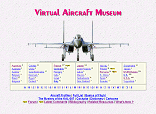|
|
|
Though this company became part of British Aircraft Corporation
in 1960, its origins date back to 1911 at its
Coventry Works (Coventry Ordnance Works Ltd.), where
quantity production of other manufacturers' designs was
undertaken during First World War. After the Armistice
development centered on the Kingston flying-boats, following
the lines of the Cork, a
 | | "Canberra" |
product of the Phoenix
Dynamo Manufacturing Company Ltd., which was then
also part of English Electric. Original features manifest in
Ayr flying-boat and Wren ultralight monoplane (1923),
but aircraft work ceased in the mid-1920s. In 1938 it
was resumed, with contracts for the Handley Page Hampden
(followed by the Halifax). In May 1944 an order was
placed for de Havilland Vampire jet fighters. Over 1,000
Vampires built before production got under way on company's
own Canberra,
 | | "Lightning" |
the first British jet bomber and the
first to serve with the RAF. Canberra production continued
for ten years, totaling over 1,300 examples, including
403 license-built Martin B-57s for the USAF.
Numerous variants developed, notably for reconnaissance; other countries using the type included Ecuador, France,
Peru, Rhodesia, Sweden, and Venezuela. Many records
broken (e.g. London-Cape Town December 1953). Lightning
twin-jet single-seat fighter of 1952 was RAF's first
supersonic fighter (in level flight); entered service December
1959. Much development of this type was undertaken
by British Aircraft Corporation, but two-seat version
emanated from English Electric.
Back to the letter E

|
|

All the World's Rotorcraft
Virtual Aircraft Museum
|





